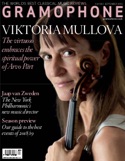Texte paru dans: / Appeared in: |
|
|
Outil de traduction (Très approximatif) |
|
|
Reviewer:
Rob Cowan
In many respects
this is a quite exceptional programme. I love the way Daniel Lozakovich marks
every little harmonic twist and turn in the first movement of the E major
Concerto, BWV1042 (ie from 2'12"), either with tiny changes of pace or modified
tone colouring, and also his fragile vibrancy in the central Adagio. The finale
has something of Heifetz’s raw energy but with more varied articulation, whereas
the finale of the A minor, BWV1041, has the benefit of strongly arpeggiated
playing, making for a maximum of contrast with the Andante, for example the
deathly quiet entry at 4'21" or Lozakovich’s rapt handling of the coda. Top
rating among rival versions goes, in my view, to Frank Peter Zimmermann, whose
conversational rapport with the Berlin Baroque Soloists is especially noteworthy
in the outer movements (the ascetic principles of period performance are
somewhat closer to hand) and who in the A minor produces a slimmer, less vibrant
tone, his approach more stylised than that of Lozakovich but just as sensitively
inflected. You could say that in terms of Baroque style, Lozakovich ‘takes you
back’ whereas Zimmermann more observes the current status quo. I took to both
when I first heard them and will happily add them to my own collection.
There is however
a slight problem with Lozakovich’s recording which will worry some readers more
than others (it didn’t worry me in the least), namely his very audible
breathing – at its most conspicuous in the slow movement of the E major and just
before the half-minute mark into the Second Partita’s Sarabande. I mention this
only because if I don’t, someone is bound to complain; but if you accept Glenn
Gould’s humming (I’ve no problem there either) then rest assured that
Lozakovich’s breathing is a lot less intrusive than that and most noticeable
on headphones. The solo work is forcefully played, the Chaconne more variegated – rhythmically, tonally, in terms of articulation – as well as less stately than, say, the wonderful Julia Fischer, who similarly courts interpretative dignity while respectfully sidestepping the more radical aspects of received modern scholarship and its implications in performance terms. Zimmermann’s CD couplings are the D minor Double Concerto and the violin version of the great D minor Keyboard Concerto, BWV1052, both of which are superb. In closing I would cite Lozakovich as a major talent in the making; and if his next disc is as good as this one, there’ll be much cause to celebrate. |
|




